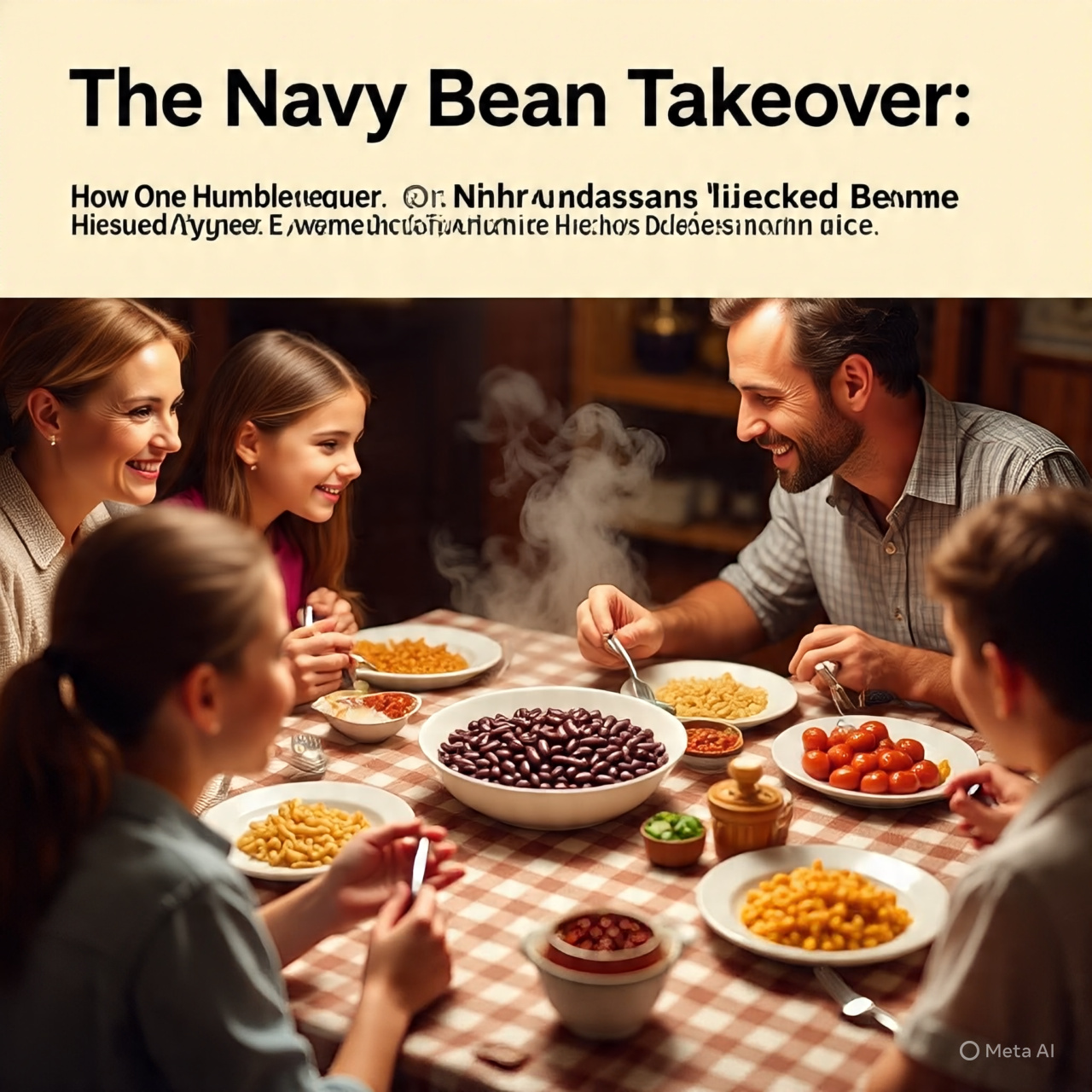FnF News
Friday Night Food Frenzy: The Great Bean Takeover — Navy Beans Spark Kitchen Revolution
In a twist that has shocked kitchens across the country and ignited culinary debates from coast to coast, navy beans — once a humble pantry staple — have taken center stage as the unexpected star of Friday night meals. Long overshadowed by the likes of black beans, chickpeas, and even the trendier cannellini, navy beans have emerged from obscurity to become a household hero. And the wave they’ve created is more than just a food trend — it’s a full-blown bean movement.
“I don’t know how it started exactly,” says Clara McMillan, 34, a food blogger from Portland, OR. “But one Friday night, I swapped navy beans into my grandma’s baked bean recipe just for fun. The result? My entire family asked for seconds. And thirds. That never happens.”
Clara isn’t alone. Across social media, posts tagged with #NavyBeanNights and #FridayFoodRevolution have surged by 312% over the last month, according to FoodTrends Analytics, a New York-based culinary data firm.
A Bean Born for Greatness
So what is it about navy beans that’s got everyone talking? According to Dr. Raymond Choi, a food scientist at the Culinary Institute of California, the answer lies in their unique culinary flexibility.
“Navy beans have a mild flavor profile that absorbs seasoning exceptionally well,” says Dr. Choi. “They’re creamy when cooked, hold their shape under pressure, and provide a hearty mouthfeel without being overpowering. They’re essentially a blank canvas with gourmet potential.”
That blank canvas is now redefining how Americans cook on Friday nights.
Even upscale restaurants are taking note.
“We introduced a Navy Bean Cassoulet as a seasonal item,” says Chef Jerome Batiste, executive chef at the award-winning La Semaine in New Orleans. “It outsold our duck confit in the first week. That’s not just a food trend — that’s a shift in public taste.”
From Side Dish to Spotlight
Navy beans have historically lived in the culinary background — often associated with baked beans, budget meals, or military rations. But today, they’re making bold appearances in tacos, stews, curry bowls, and even desserts.
“There’s something comforting about beans,” says Meredith Lyle, food historian and author of From Field to Feast. “They remind us of home. But navy beans are unique — they’re plain enough to reinvent. Think of them as the James Stewart of beans: classic, versatile, and surprisingly charismatic.”
The Tweet Heard Round the World
While their rise had been bubbling beneath the surface for months, many trace the tipping point to a now-viral Twitter thread by user @BeanQueen92 (real name Shanice Alvarez, a high school English teacher from Des Moines):
“Y’all. I used navy beans instead of black beans in my Friday chili night and it changed my life. Not kidding. Creamier. More flavor. I’m starting a Navy Bean Supremacy thread. Let’s go.”
The tweet went viral overnight, amassing 1.2 million likes, and was quoted by influencers, news sites, and even celebrity chef Mia Santiago, who recreated it live on her late-night show Mia at Midnight.
“I made navy bean ice cream,” Santiago told viewers with a raised brow. “And it was actually… incredible?”
Resistance Brews: The Great Legume Divide
But not everyone is thrilled. A faction of bean loyalists — particularly fans of lentils, kidney beans, and mung — are sounding alarms over what they call “navy bean domination.”
“Every legume has cultural value,” warns Priya Desai, a registered nutritionist and author of The Lentil Legacy. “Let’s not let one bean become the face of all plant-based eating.”
An active Reddit thread in r/Cooking titled “Navy Beans Are Overrated” has logged over 5,000 comments, many defending the unique merits of other beans. Some accuse the movement of being “culinarily gentrified.”
Supply Strains & Economic Ripples
The bean craze is also affecting supply chains. PantryWorld Inc., one of the largest dry goods distributors in North America, reported a 420% spike in navy bean orders since early May.
“We’ve issued temporary purchase caps in five states,” says Hector Alvarez, Regional Director at PantryWorld. “People are hoarding them like it’s toilet paper during the pandemic.”
Retail chains like GreenBarn Markets have started issuing public notices advising shoppers to diversify their bean choices “for the collective good.”
Health Benefits Back the Buzz
Despite the supply stress, nutritionists are celebrating the trend.
“Navy beans are rich in fiber, protein, iron, and B vitamins,” says Dr. Jamila Osei, a public health researcher and spokesperson for the National Heart and Nutrition Board. “They’re low glycemic and heart-friendly. If we’re finally romanticizing beans on a mass scale, this is exactly the one to hype.”
Foodies Forecast the Future
Is this just a moment, or the dawn of a new era in comfort cuisine?
“The world is leaning plant-based,” says Leo Tran, food futurist and author of The Next Bite. “Beans are the protein of tomorrow. The navy bean just happened to get there first. It won’t end here — expect split peas and heirloom lentils to ride the same wave soon.”
Online recipe platforms are already adjusting. According to SpoonCast, a recipe aggregator, searches for “navy bean tacos,” “navy bean shakshuka,” and “vegan navy bean alfredo” have all doubled since mid-May.
The Bean Heard Around the Dinner Table
Back in Chicago, college senior Dante Ruiz, 22, says he hasn’t made his usual Friday night pasta since April.
“Now it’s navy bean tacos with chipotle crema. It sounds weird, but it slaps,” he says with a grin. “My roommates thought I’d lost it. Then they tried it. Now it’s our thing.”
And in a world wrestling with uncertainty, climate concerns, and inflation, maybe the rise of the humble navy bean is something we all needed — a little bite of comfort, a pot full of hope.
“Beans saved our Friday nights,” says Clara McMillan with a laugh. “And maybe our budgets too.”
Reporting from Los Angeles, Des Moines, Chicago, and New Orleans. Follow @FNFWeekly for the next edible uprising.

